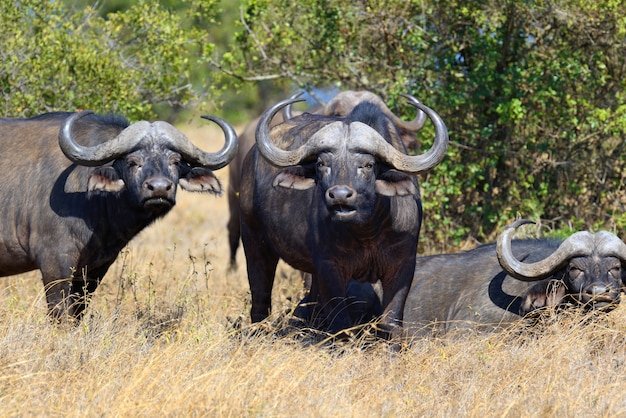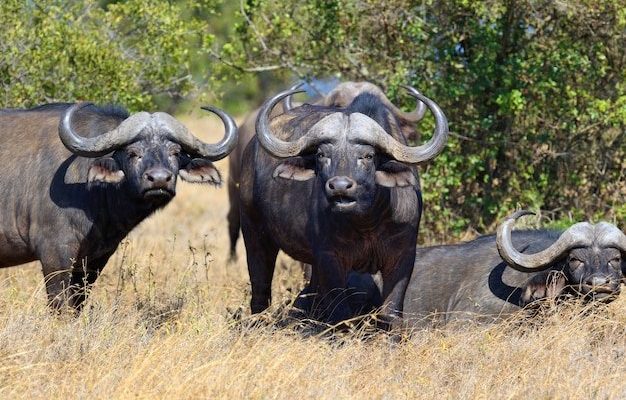
African buffalos, often referred to as syncerus caffer, are more than just a herd of large grazing mammals. They exhibit complex social behaviors that shape how they raise their young. In the wild, nurturing a calf is like running a family business—it takes teamwork, strategy, and sometimes a fair bit of chaos. Here’s the thing: the survival of each calf isn’t just about finding food and staying safe; it also involves the entire herd pitching in to help. So, how do these buffalos manage it all?
The Importance of Herds in Buffalo Calf Rearing
African buffalos are social animals that live in groups called herds, which can number anywhere from several dozen to thousands of individuals. These herds play a crucial role in raising young calves. When a new calf is born, it’s not just the mother who takes on the responsibility; the entire herd participates. This is like having an extended family around to help out. You might see other females, known as “aunts,” who help watch over the calves while their mothers graze or rest.
Within these herds, there’s a strong bond that forms between mothers and their young. Buffalos have been observed to show affection and protection towards their calves through gentle nudges and close physical proximity. This isn’t just a nurturing instinct; it also serves as a survival tactic. The more eyes on a calf, the better its chances are of avoiding predators like lions and hyenas.
Calf Development Stages
Buffalo calves go through several key stages as they grow. Immediately after birth, a calf is unsteady on its feet, much like a toddler taking its first steps. They usually stand and start walking within a few hours, which is crucial for keeping up with the herd. Here’s how the development typically unfolds:
- Newborn (0-1 month): Calves rely heavily on their mothers for milk. During this time, they stay close to their moms, learning the herd’s movements and establishing their first social connections.
- Juvenile (1-6 months): As they grow, they start to explore their surroundings, although they still depend on their mother. They begin to eat grass and develop their immune systems.
- Subadult (6 months – 2 years): At this stage, they start integrating more deeply into herd dynamics, learning social cues and hierarchies. They also begin to develop friendships with other calves, which is crucial for their social development.
Each of these stages is important as young buffalos learn essential skills for survival in the wild.
Maternal Care and Bonding
Maternal care in African buffalos is quite remarkable. Mothers are fiercely protective, often standing between their calves and potential threats. You might be wondering how they identify their own young in a large herd. African buffalos have a strong maternal instinct, and they can recognize their calves by sight and smell.
Bonding is significant in these initial months. Mothers engage in behaviors such as licking their calves and staying physically close. This contact helps reinforce their bond and ensures the calf feels secure. In fact, calves that receive consistent maternal care tend to be healthier and more resilient against the stresses of their environment.
Challenges Faced by Calves
Raising calves in the wild is no easy feat. African buffalos face multiple challenges, including predators and environmental stresses. You might wonder what these challenges look like:
- Predation: Young buffalos are vulnerable to predators like lions, leopards, and hyenas. Mothers must be vigilant and often position themselves to defend their young from attacks.
- Environmental Factors: The savanna can be harsh, with droughts affecting food and water availability. Young calves need to learn to adapt quickly to changing conditions.
- Herd Dynamics: Calves must navigate the social hierarchy of their herd, which can sometimes be challenging. Conflicts arise, and they need to find their place while still getting the care they need.
These challenges teach young buffalos resilience, preparing them for life as independent adults.
Learning Through Play and Exploration
Calves learn vital skills through play, much like human children. Social play includes activities like chasing each other, mock fighting, and even practicing their grazing techniques. When you observe these little moments, it’s clear that play is a serious business for buffalos.
During these playful interactions, calves learn important lessons about their social structures. They test boundaries and develop friendships that will support them throughout their lives. The lessons learned during play often translate into important survival skills.
Significance of the Mother-Calf Bonding Period
The bonding period between mothers and calves is crucial not just for emotional reasons, but also for the calf’s development. Research shows that the first few months of life are when calves are the most impressionable. This period fosters trust and attachment, setting a foundation for future interactions within the herd.
As the calf grows and starts to assert its independence, the mother’s role shifts. She gradually allows the young one to explore more on its own, but she remains close enough to provide guidance and support. This nurturing approach helps the calf develop confidence and skills necessary for adult life.
The Role of the Herd in Calf Survival
In the wild, the herd’s support is vital for a calf’s survival. You could think of it as a built-in safety net. When danger approaches, the herd can form protective circles around the most vulnerable members. This collective responsibility increases the odds of survival for each calf within the group.
Moreover, the camaraderie within the herd allows young buffalos to learn from other adults and peers. They observe behaviors and social cues that contribute to their understanding of herd dynamics. This interconnectedness is a key factor in their overall wellbeing and survival.
In conclusion, African buffalos are remarkable animals that exhibit profound nurturing behavior towards their young. From the close-knit relationships within the herd to the lessons learned during play, every aspect of raising a calf is intricately woven into the fabric of their social life. If you ever find yourself in the savanna, take a moment to watch these incredible creatures—it’s a beautiful reminder of the strength of family and community in the wild.

